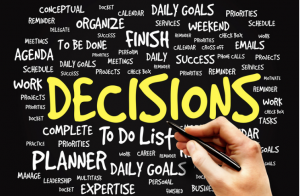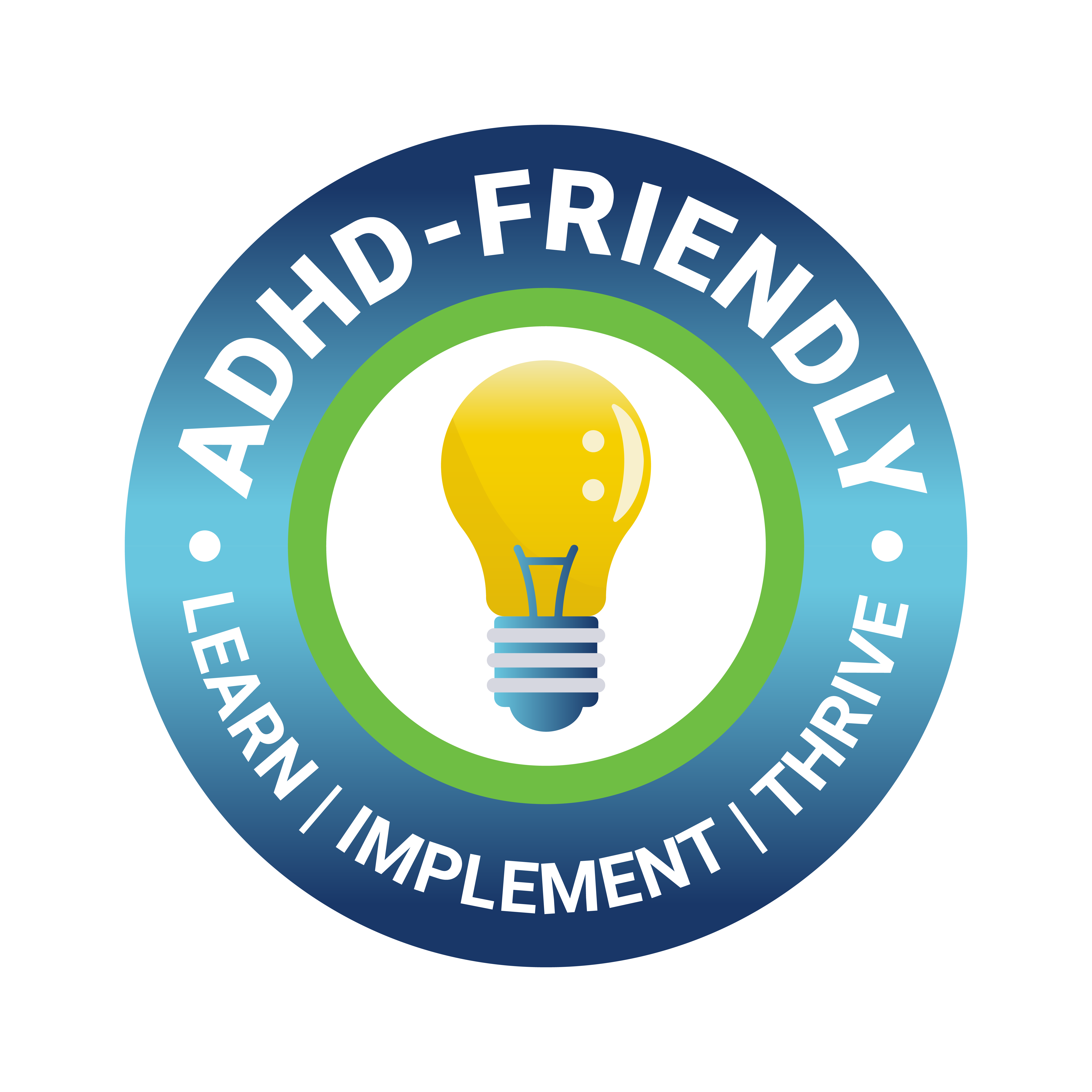 Decision Fatigue and ADHD-Friendly Tips to Support Your Decider
Decision Fatigue and ADHD-Friendly Tips to Support Your Decider
Even if you haven’t heard of Decision Fatigue before, I am willing to bet you have experienced it.
Decision Fatigue is defined as, “A state of mental overload that can impede a person’s ability to continue to make decisions.”
It is the idea that after making many decisions, your ability to make more and more decisions over the course of the day becomes worse. This is impacted negatively by ADHD and weak executive function (EF) skills such as planning and prioritizing, working memory, metacognition and emotional regulation.
According to Dr. Lisa MacLean and the American Medical Association (AMA), “By the time the average person goes to bed, they’ve made over 35,000 decisions.” You read that right, 35,000 decisions. Each and every one of those decisions take time and energy. Dr. MacLean says, “The more choices you have to make, the more it can wear on your brain, and it may cause your brain to look for short cuts.”
Dr. MacLean identifies 4 main symptoms of Decision Fatigue:
- Procrastination
- Impulsivity
- Avoidance
- Indecision
These symptoms lead to what I call Default Decisions. Default decisions are typically not in line with your values. They often feel warranted or good in the moment but over time, undermine your habits, values and goals. For example, one of my default decisions often includes snacking at night. If there are Oreos in the house, I may resist them all day only to tell myself I deserve an Oreo after being good all day.
Tips to support your “Decider”
-
Reduce Temptations/Increase Friction: Make it easier to resist and harder to make a choice that is not in line with your goals. For example:
- No Oreos in the house. If they aren’t here, I am not wasting energy resisting them. And, it would be very unlikely that I would be willing to drive to the store to buy some!
- Put the TV remote control in a different room (so I don’t find myself mindlessly sitting down and scrolling or binge-watching a show on Netflix).
- Get up without hitting the snooze button by putting the alarm clock across the room. This forces me to get out of bed to turn it off. Yes, I could climb back in bed after turning it off, but I know once I am up, I tend to keep going.
-
Decide Once: Decide what, when, with who, etc., in advance to support your future self to take action more easily. For example:
- Exercise- Yoga every Monday, Tuesday, Wednesday and Thursday morning at 5:30 a.m. I don’t have to decide what exercise I am going to do or when I am going to do it. I do it on those days and if I want to do more during the week, I can, but I don’t expect myself to do anything more than what I decided I would do.
- Meal Planning- Taco Tuesdays, Spaghetti Saturdays, etc. Our family always did leftovers on Wednesday nights and pizza on Friday nights.
- Kids Birthday Parties- having 4 children necessitated me putting some boundaries on the number of birthday party invites they could say yes to each year. Once they were old enough to receive invitations from classmates, they were allowed to say yes to 3 each school year. That meant 12 birthday parties a year, which felt manageable. This may not be something you want or need to put structure around. For me, this was a huge energy- and money- saver!
-
Make Lists: Make it easier to pick your next book, tv show or movie by making a list of ones you want to read/see. I use my Notes app on my phone and level up my lists by including additional details such as:
- Movies/TV shows to watch- I have categories for this including what to watch solo, with my husband, with each of my kids, and with friends/extended family. My family is notorious for having a difficult time picking something to watch for family movie night. It is no exaggeration to share that we have literally spent an hour scrolling before picking something nobody really wanted to watch just to be done with the effort of deciding what to watch. Keeping a list of movies we have agreed in advance we would like to watch together makes it much easier to decide come movie night!
- Restaurants- just like above, we have spent so much time trying to decide where to eat that we have ended up eating somewhere nobody is particularly excited about because we were all hungry and cranky! I keep a list of restaurants in my Notes app and include a few key words to remember what I liked about it. Ex: “great dessert menu” or “kids all loved it.”
- Books- I can get out of a good reading habit if I finish the book I am reading and don’t have a new sparkly book already identified. Picking a book to read takes effort (which is why I love a great series!). Every January I make a book list for the year. I don’t always read everything on it, but if I am not sure what to read next, I only need to look as far as my book list to find something I already decided was worthy of being on my list!
-
Delegate the Decision: If you aren’t the one who must make the decision, delegate it! Here are some examples of where this might work:
- Restaurants- let someone else pick where to eat. Sometimes I will share what I am not in the mood for, such as, “I am not in the mood for Chinese food, but anything else is fine with me.”
- If I can’t decide what to order (another common challenge), I might narrow it down to 2 or 3 and ask the waiter for their recommendation.
- Magic 8 Ball- either the actual toy or an app, for decisions that aren’t critical, this is a great strategy to support your decider. My daughter uses it for many of her non-essential decisions such as, “Magic 8 Ball, should I have a 2nd cup of coffee?” or “Magic 8 Ball, should I make pizza for dinner?”
- Coin Flip- if you are trying to decide between 2 options, assign one “Heads” and one “Tails.” Flip a coin. BEFORE looking at what it landed on, notice whether you are hoping it is Heads or Tails. Often our intuition chimes in during that split second while the coin is in the air.
- Restaurants- let someone else pick where to eat. Sometimes I will share what I am not in the mood for, such as, “I am not in the mood for Chinese food, but anything else is fine with me.”
-
Capture your Decisions in your Personal Owner’s Manual (POM): Once you make an important decision, capture the details in your POM. Some examples of what this might look like:
- Vacation decision- capture where you were considering going and what led to the winner. If you need to change plans for any reason, you have the other options and details to support navigating to a different destination.
- When making a larger purchase- time to buy a new dishwasher, a car or having some work done on your home (or buying a new home)? Capture the information in your POM including prices, timelines, etc. I know I may not end up needing it, but after having benefited from it over the years, I have never regretted taking a few minutes to capture it.
- Additional note on doing this to support house-hunting: having moved several times, I have a master list of my “Home Priorities.” Instead of needing to re-invent the wheel, I simply tweak the existing list to reflect our current priorities.
- It helps me remember what I already decided was important to me (ie, school district, distance to grocery store, tax rate, fireplace, etc.).
Dr. Lisa MacLean says, “The bottom line is, look at all the big and little decisions you make every day and think about how you can simplify your life. By changing your habits and setting up the right routines, you can decrease anxiety and conserve your energy for the decisions that really matter.”
When it comes to avoiding decision fatigue and ADHD-friendly tips to support your Decider, I couldn’t agree more!




